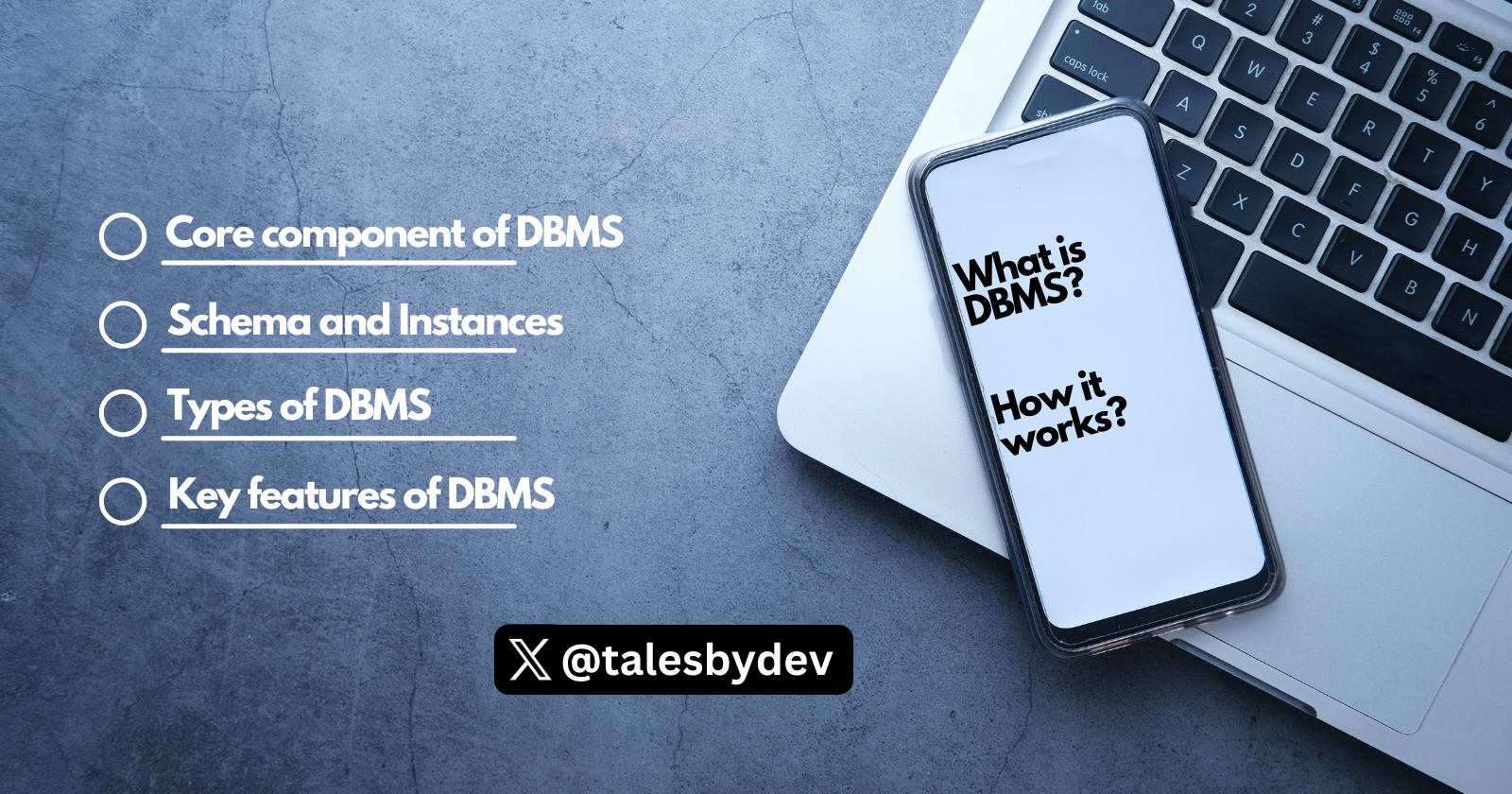Understanding Database Management Systems
 Nitish singh
Nitish singh
Hey everyone, Welcome back to another Article. Today, we are going through the definition of a Database Management System (DBMS), its types, features, and real-life applications.
A Database Management System is a software tool that helps users to manage store and retrieve data. It’s like an electronic cabinet that can store large amounts of data that is easy to manage. We need DBMS to improve data security, maintain data integrity, improve data sharing, and automate backup and recovery.
The core component of DBMS
Data storage and retrieval
The process of storing data in an organized structure within a database and then efficiently accessing and retrieving specific information from that database using queries, allowing users to manipulate and analyze data as needed.
Data is stored in a structured format in the table with rows and columns, this way it’s easy to retrieve through queries.
Database schema and instances
DBMS schema means designing the database, it is further divided into three parts
Physical schema:
In physical schema, a database is designed at a physical level. At this level, the schema describes how a block of data is stored and how storage is managed.
Logical schema:
In logical schema, a database is designed at a logical level. At this level, the programmer and data administrator perform their work.
View schema:
In view schema, a database is designed at a view level. This schema describes the user interaction with the database system.
DBMS Instance
The data is stored for a particular amount of time and is called an instance of the database. The database schema defines the attributes of the database in the particular DBMS. The value of the particular attribute at a particular moment in time is known as an instance of the DBMS.
Types of DBMS
Relational Model
A relational database is defined as a group of independent tables that are linked to each other using some common field of each related table. This modal can be represented as a table with columns and rows.
NoSQL vs Relational databases
While relational databases focus on structured data, NoSQL databases handle unstructured or semi-structured data, making them ideal for big data applications.
Key Features of DBMS
ACID properties
To maintain the integrity of data, there are four properties described in DBMS that are called ACID properties.
Atomicity:
The term atomicity means the data is atomic, if an operation is performed it should be performed completely or not at all.
Consistency:
It means the value should be preserved always. In DBMS we maintain the integrity of data, which means if a change is made in the database, it should always remain preserved.
Isolation:
Isolation means separation, Isolation is a property of a database where no data should affect the other one and may occur concurrently.
Durability:
Durability ensures the permanency of something. In DBMS, the term durability ensures that the data after the successful execution of the operation becomes permanent in the database.
Real-world examples of DBMS
Social media
Social media platforms like Facebook and Instagram use DBMS to track user information like names, phone numbers, photos, and passwords.
Banking
DBMSs are used to store information about bank transactions, deposits, and new accounts.
Education
DBMSs are used to store information about students, teachers, and other staff.
Transportation
DBMSs are used to store information about ticket bookings, arrival and departure times, delays, and seat numbers for trains and airplanes.
In conclusion, a Database Management System (DBMS) is a vital tool that revolutionizes how data is stored, organized, and retrieved in the modern world. By providing a structured approach to data management, DBMS ensures data security, consistency, and ease of access. From social media platforms to banking, education, and transportation, DBMS is at the core of many real-world applications. Its features, like ACID properties and the ability to handle structured and unstructured data, make it an indispensable asset in today’s data-driven age.
Subscribe to my newsletter
Read articles from Nitish singh directly inside your inbox. Subscribe to the newsletter, and don't miss out.
Written by

Nitish singh
Nitish singh
A Software Engineer, Frontend Developer looking for opportunities to build myself